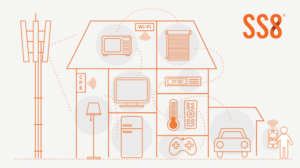
Lawful Interception for IoT at the Network Edge
The increasing popularity of Internet of Things (IoT) applications and smart devices has led to a coexistence between 4G and 5G networks. As a result,
Controlling borders is vital to every country’s national interest, from managing immigration to preventing drug smuggling, human trafficking, and terrorism. The seemingly simple answer of physical barriers
In the coming years, AI is expected to dramatically accelerate the evolution of lawful intelligence, giving law enforcement agencies the ability to efficiently draw insight from data at unprecedented scale.
Quantum Computing may enable communications that do not travel across a network in the conventional sense and endanger traditional encryption methods, carrying critical implications for lawful intelligence.
Preventing illicit trafficking is a daunting task for border security agencies. AI-powered Computer Vision and location intelligence enhance security, reduce costs, and close surveillance gaps.
Effective lawful intelligence solutions do more than just ingest and analyze data. They build evidential narratives compelling enough for court that are backed by a fully auditable chain of custody.

The increasing popularity of Internet of Things (IoT) applications and smart devices has led to a coexistence between 4G and 5G networks. As a result,

As telecom operators plan their rollout of the fifth generation (5G) of network services, two distinct services have emerged, mobile and fixed wireless access (or

I was reading an article in the most recent issue of Science News that focused on the need for analyzing cellular phone communications by criminals.
THE DATA SILO DILEMMA FOR LAW ENFORCEMENT
How to Ingest, Filter and Query 5G Volumes
Webinar Presented by Kevin McTiernan